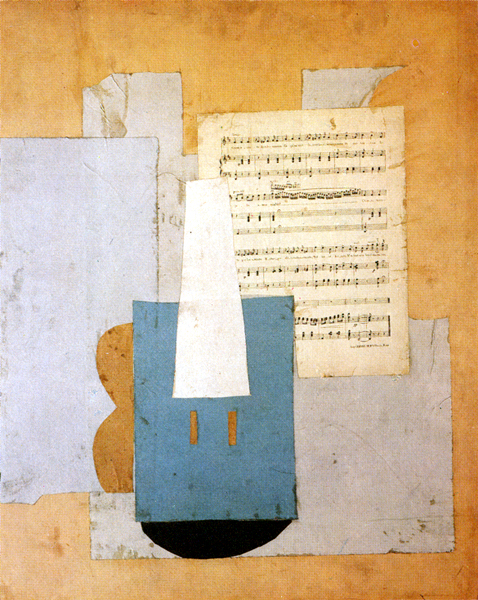Cubism is an early-20th-century avant-garde art movement pioneered by Georges Braque and Pablo Picasso. This painting is entitled “Nude Descending a Staircase” by Marcel Duchamp.
Here are more examples of cubist-inspired images:
Analytical Cubism is most often a denotative expression of a physical object.
As an historical art movement it is a style or approach to painting or image making where multiple points of view, and/or parts of an object are rendered simultaneously. Because all of the parts that make up the whole of the object are represented, the image is not abstraction, but a simultaneous point of view. Originally, simplified geometric 3d shapes - cubes, spheres, cones, and columns, were used to visually convey the object.
Part A - Analytical Cubist Object
Select another object that you are familiar with that you have significant interaction with, like an automobile, or a backpack from the following list of possibilities:
• A Vehicle
• An Animal
• A Wearable
• A Musical Instrument
• A Sport Equipment
Using an analytical cubist approach, create an image which communicates the physical object as fully as possible by collaging simultaneous physical images and views photographed and/or gleaned from the internet.
• Post a traditional photograph of the object on your blog. Knock out the background and just show the physical object.
• Gather a collection of at least three dozen views of the object and it’s parts. This can include the inside parts as well as outside parts.
• Compose a digital cubist portrait (collage, modge/podge) of the physical object using Photoshop or Illustrator.
Post all of these elements, as well as your process, on your blog.
The Final Analytical Cubist Communicator is due printed and posted on your blog by the beginning of class, Tuesday, March 13th.
___________________________________________________________________
Synthetic Cubism is most often a connotative expression of a physical object.
Like analytical cubism, synthetic cubism is also an approach of image making where multiple points of view, and/or parts of an object are rendered simultaneously. The difference however is that the connotative aspects of the object (what it does, it’s purpose, what it stands for) are communicated rather than the physical.
Traditional synthetic cubist images where collages that often use signs or symbols and/or actual elements that signified the object in place of the physical representation.
For example, the image below is using musical notation to communicate the music coming from the violin. Below that image are other, more contemporary synthetic cubist images.
Part B - Synthetic Cubist Object
Using a synthetic cubist approach, re-create an image of your object which communicates what the object stands for or means (what it does - it’s value or benefit - rather than what it physically is) as fully as possible by collaging simultaneous connotative images gleaned from the internet with the less amount of analytical imagery needed to communicate the object.
• Gather a collection of at least three dozen views of the object’s possible signifiers.
• Compose a digital cubist portrait (collage, modge/podge) of the synthetic connotative object using Photoshop or Illustrator.
Post all of these elements, as well as your process, on your blog.
The Synthetic Cubist Communicator Comp Block-in is due posted on your blog by the beginning of class, Tuesday, March 13th.
Part C - Final Analytical & Synthetic Cubist Object Messages
First, choose a word which creatively expresses what you are trying to communicate about the physical/denotative attributes of your chosen object with your cubist communicator, and then integrate it visually into a final analytical cubist message.
Second, choose a second word which creatively expresses what you are trying to communicate about the meaningful/connotative (synthetic) attributes of your chosen object with your cubist communicator, and then integrate it visually into a final synthetic cubist message.
Both the final Analytic and Synthetic Cubist Messages, complete with worlds, are due printed out, and posted on your blog by the beginning of class, Thursday, March 15th.














